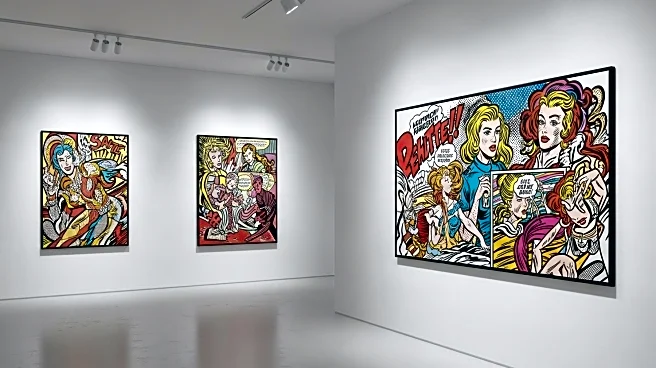What is the story about?
What's Happening?
Sotheby's New York is set to auction over 90 works from the estate of Roy Lichtenstein, following the death of his wife, Dorothy Lichtenstein, in 2024. The auction, titled 'Reflections on Pop,' will feature a diverse range of Lichtenstein's creations, including paintings, sculptures, drawings, collages, and prints. The works span more than four decades and showcase the artist's exploration of compositions and media experimentation. The sale is anticipated to generate over $15 million, with individual pieces priced between $3,000 and $3.5 million. The auction aims to attract younger buyers, as the number of Sotheby's bidders under 30 has tripled in the past five years.
Why It's Important?
The auction of Roy Lichtenstein's works is significant for the art market, as it highlights the enduring appeal and value of Pop art. Lichtenstein's creations are iconic representations of 20th-century art, and their sale underscores the continued interest in his work. The auction provides an opportunity for collectors and art enthusiasts to acquire pieces from a renowned artist, potentially influencing market trends and valuations. Additionally, the sale reflects the growing participation of younger buyers in the art market, indicating a shift in demographics and preferences within the industry.
What's Next?
The auction is scheduled for September 26, and its outcome could impact future sales of Pop art and works by Lichtenstein. If the auction exceeds expectations, it may encourage other estates to release similar collections, further invigorating the market. The success of the sale could also lead to increased interest in Lichtenstein's work, prompting exhibitions and retrospectives that explore his artistic legacy. As younger buyers continue to engage with the art market, auction houses may adapt their strategies to cater to this demographic, potentially influencing the types of works offered and marketing approaches.
Beyond the Headlines
The auction raises questions about the preservation and dissemination of artistic legacies, particularly in the context of estate sales. As artworks transition from private collections to public auctions, considerations around authenticity, provenance, and cultural significance become paramount. The sale also highlights the role of auction houses in shaping art history narratives and the ethical implications of commodifying cultural heritage. Furthermore, the increasing involvement of younger buyers may signal a shift in cultural consumption patterns, with implications for how art is valued and appreciated across generations.
AI Generated Content
Do you find this article useful?
















